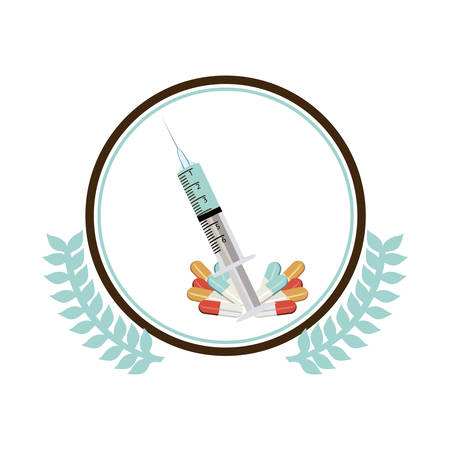Introduction to the Rise of Celebrity-Inspired Cosmetic Procedures
In recent years, the United Kingdom has witnessed a marked surge in cosmetic enhancements among its youth, a trend closely linked to the pervasive influence of celebrities and reality television culture. The allure of achieving a certain “look” – often popularised by high-profile personalities and social media influencers – has fuelled a growing demand for cosmetic procedures such as lip fillers, rhinoplasty, and non-surgical facial treatments. Programmes like “Love Island” and “The Only Way is Essex” have normalised aesthetic alterations, presenting them not merely as aspirational but almost routine elements of personal grooming. This cultural shift has prompted young people across Britain to seek out cosmetic interventions at increasingly younger ages, sparking concern amongst healthcare professionals and policymakers alike about the broader public health implications.
2. Cultural Pressures and Social Media Influence
Within the United Kingdom, the interplay between social media trends, influencer marketing, and celebrity culture has become a defining force in shaping beauty ideals among young people. Platforms like Instagram, TikTok, and YouTube are awash with UK-based influencers who regularly showcase their cosmetic enhancements, setting standards that many youths perceive as both aspirational and attainable. The proliferation of before-and-after posts, ‘glow-up’ challenges, and sponsored cosmetic procedure content creates a digital environment where appearance is closely linked to self-worth and social capital.
Influencer Impact on Beauty Standards
The influence of British celebrities—ranging from reality TV stars to musicians—cannot be understated. Their visibility in the media, often coupled with candid discussions about their own cosmetic procedures, reinforces certain aesthetics as fashionable or even necessary. For example, ‘Love Island’ contestants frequently discuss their experiences with lip fillers or Botox, normalising these interventions for their large youth following.
Social Media Trends Amplifying Pressure
UK-specific trends such as #LondonLook or #BritishBeauty circulate rapidly online, further embedding narrow definitions of attractiveness. These hashtags are typically associated with high-glam makeup styles and sculpted features, which are often achieved through cosmetic intervention rather than genetics alone.
Comparison Table: Key Drivers of Cosmetic Procedure Uptake Among British Youth
| Driver | Description | Example |
|---|---|---|
| Influencers | Promote products/procedures to large audiences | Sophie from Essex sharing her rhinoplasty journey on TikTok |
| Celebrity Endorsement | Celebrities openly discussing their enhancements | Molly-Mae Hague’s public dialogue about fillers and reversal |
| Social Media Challenges | Viral trends encouraging ‘before-and-after’ reveals | #GlowUpChallenge featuring transformations post-cosmetic work |
| Peer Comparison | Youths comparing themselves to filtered/edited images online | Snapchat filters setting unrealistic standards for facial symmetry |
This culture of visibility and comparison can intensify feelings of inadequacy among British youth, prompting some to pursue cosmetic procedures as a perceived solution to social or psychological pressures. As these trends continue to grow in prominence within the UK context, they raise pressing questions about the long-term impacts on young people’s self-image and mental wellbeing.

3. Health Risks and Psychological Impact
The surge in popularity of celebrity-inspired cosmetic procedures among British youth brings with it a complex array of health concerns. From a physical perspective, these treatments—whether surgical or minimally invasive—carry inherent risks such as infection, scarring, nerve damage, and even life-threatening complications if performed improperly or without sufficient aftercare. Many young people are drawn to quick fix solutions, often seeking out unregulated providers or travelling abroad for cheaper procedures, further heightening the likelihood of adverse outcomes.
Beyond the tangible medical dangers, there is mounting evidence that normalising cosmetic enhancements can have profound psychological repercussions. With social media awash in airbrushed images and influencers openly discussing their latest tweaks, the threshold for what is considered normal or acceptable appearance has shifted dramatically. This cultural shift is particularly influential among impressionable teenagers and young adults in the UK, whose self-esteem and body image are still forming. Studies suggest an increasing prevalence of body dysmorphic disorder (BDD) and anxiety linked directly to unrealistic beauty standards perpetuated by celebrities and online trends.
The cycle becomes self-perpetuating: as more young people undergo cosmetic procedures to emulate their idols, the perceived necessity for surgical intervention becomes entrenched. This not only fuels demand but also exacerbates feelings of inadequacy among those who choose not to participate. The NHS has reported rising numbers of young patients seeking mental health support due to body image distress, which underscores the urgent need for public health campaigns that challenge harmful narratives and promote acceptance of natural diversity in appearance.
4. Regulatory Environment and Ethical Considerations in the UK
The regulatory landscape surrounding cosmetic procedures in the UK is complex, with several bodies overseeing different aspects of practice. The General Medical Council (GMC) provides guidance for doctors, while the Care Quality Commission (CQC) regulates clinics offering surgical interventions. Despite these frameworks, concerns remain regarding the effectiveness of current regulations, particularly when it comes to protecting younger individuals influenced by celebrity culture.
Regulatory Bodies and Their Functions
| Regulatory Body | Scope of Regulation | Key Responsibilities |
|---|---|---|
| General Medical Council (GMC) | Medical practitioners | Sets standards, investigates complaints, issues sanctions |
| Care Quality Commission (CQC) | Healthcare providers/clinics | Inspects facilities, enforces compliance, publishes ratings |
| Advertising Standards Authority (ASA) | Cosmetic procedure advertising | Monitors claims, bans misleading adverts, protects consumers |
| Joint Council for Cosmetic Practitioners (JCCP) | Aesthetic practitioners (including non-surgical) | Registers practitioners, sets voluntary standards, promotes best practice |
Youth Safeguarding Measures and Gaps
In 2021, England introduced a legal ban on cosmetic procedures for under-18s, including injectables like Botox and dermal fillers. This step was widely seen as a move to address rising public health concerns. However, loopholes persist—such as treatments being performed by unregulated practitioners or outside clinical settings—posing ongoing risks to British youth. Moreover, there is little mandatory psychological screening or cooling-off periods before surgery for young adults over 18. While professional bodies recommend thorough consent processes and safeguarding checks, adherence varies across the sector.
Practitioner Responsibilities: Ethics Over Profit?
The ethical duty of practitioners is enshrined in GMC guidance: patient welfare must take precedence over commercial interests. Practitioners are expected to assess motivations carefully—especially when dealing with young clients whose self-image may be shaped by social media trends and celebrity influence. Yet reports of inadequate consultations and high-pressure sales tactics suggest that commercial incentives sometimes override ethical considerations. Industry observers call for stricter enforcement and ongoing education to ensure all practitioners are equipped to identify vulnerable individuals and act accordingly.
Towards Stronger Protection: Recommendations for Improvement
- Mandatory Psychological Assessments: Introduce mental health screenings for all under-25s seeking cosmetic procedures.
- Tightened Advertising Regulations: Ban endorsements targeting minors and require clear risk disclosures in all promotional material.
- Improved Practitioner Training: Make safeguarding training compulsory for anyone performing cosmetic procedures.
- Unified Regulatory Register: Establish a comprehensive national register to close loopholes and promote accountability.
The UKs approach has made significant strides but requires ongoing review and adaptation to address evolving risks—particularly as celebrity-driven beauty ideals continue to exert strong influence over young people’s choices.
5. Public Health Response and Educational Initiatives
In response to growing concerns about the influence of celebrity-driven cosmetic trends on British youth, public health authorities, schools, and community organisations have launched several campaigns and initiatives. These efforts are designed not only to raise awareness about the risks associated with cosmetic procedures but also to promote a healthier, more realistic standard of beauty.
Highlighting Existing Public Health Campaigns
The NHS and Public Health England have both spearheaded nationwide campaigns such as “Body Confidence” and “Be Real,” which aim to challenge unrealistic body ideals perpetuated by social media and celebrity culture. These campaigns utilise social media, public service announcements, and collaborations with influencers who advocate for body positivity and self-acceptance. Furthermore, they provide resources for young people and parents on navigating appearance-related pressures.
School-Based Initiatives
Many secondary schools across the UK have integrated body image education into their Personal, Social, Health and Economic (PSHE) curriculum. Workshops led by trained facilitators encourage students to critically analyse media messages, recognise digitally altered images, and understand the psychological impacts of striving for unattainable looks. Some schools partner with charities like the Dove Self-Esteem Project to deliver evidence-based sessions on building self-worth beyond physical appearance.
Proposed Strategies for Future Impact
Experts have called for further regulation around advertising cosmetic procedures and greater transparency from clinics regarding risks involved. There is increasing support for mandatory waiting periods before undergoing elective procedures for minors, as well as age restrictions on certain treatments. Additionally, ongoing professional development for teachers—so they can better support pupils struggling with body image issues—is a key recommendation. By fostering open conversations and equipping youth with critical thinking skills, these combined strategies aim to create a more informed generation empowered to make safe choices regarding their bodies.
6. Conclusion: Addressing the Balance Between Personal Choice and Public Health
Reflecting on the growing phenomenon of celebrity-inspired cosmetic procedures among British youth, it is clear that public health concerns must be balanced thoughtfully with respect for personal autonomy. In the UK, where individuality and self-expression are highly valued, any attempt to mitigate risks associated with cosmetic trends should be mindful of these cultural nuances. Policymakers, healthcare professionals, and educators face a delicate task: they must raise awareness about potential physical and psychological harms without resorting to prescriptive or judgemental messaging that might alienate young people.
Culturally sensitive strategies could include open dialogue in schools, accessible mental health support, and transparent information campaigns that acknowledge both the allure and the dangers of these procedures. Collaboration with influencers who resonate authentically with British youth may also prove effective in conveying nuanced messages around body image and self-worth. Ultimately, fostering critical thinking and resilience—rather than dictating choices—will empower young people to make informed decisions about their bodies while supporting overall public health objectives.


